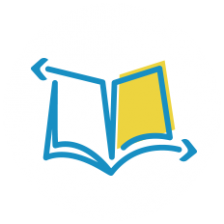Definition
The Individuals with Disabilities Education Act (IDEA) officially defines speech and language impairments as “a communication disorder such as stuttering, impaired articulation, a language impairment, or a voice impairment that adversely affects a child’s educational performance.” Each point within this official definition represents a speech and language subcategory. “A communication disorder such as stuttering” provides an example of a fluency disorder; other fluency issues include unusual word repetition and hesitant speech. “Impaired articulation” indicates impairments in which a child experiences challenges in pronouncing specific sounds. “A language impairment” can entail difficulty comprehending words properly, expressing oneself and listening to others. Finally, “a voice impairment” involves difficulty voicing words; for instance, throat issues may cause an abnormally soft voice.
Common Traits
Speech and language impairments tend to emerge at a young age, and the earlier a child is diagnosed and receives services accordingly, the more likely that child can outgrow the disability. Speech-language pathologists work with children with speech and language impairments, as well as with parents and teachers. For example, a speech-language pathologist might work with a child with impaired articulation to help him or her learn to pronounce “s” and “z” sounds correctly.
If a child fails to meet the speech and language milestones set by American Speech-Language-Hearing Association (ASHA), he or she might have a speech and language impairment.The National Dissemination Center for Children with Disabilities, commonly referred to as NICHCY, notes that parents are usually the first to suspect that a child might possess such an impairment. However, it’s important to note that hearing issues, autism and a number of other disabilities can masquerade as speech and language impairments, and a child with a suspected impairment should be evaluated by a speech-language pathologist to avoid misdiagnosis.
Educational Challenges
The obstacles created by speech and language impairments vary by the specific case, but because communication is at the core of education, these impairments can impact a student’s entire educational experience. Some of these challenges might involve:
- Communicating effectively with classmates and teachers
- Understanding and/or giving oral presentations
- Participating in classroom discussions
- Attaining normalcy within a group
Tips for Teachers and Parents
NICHCY recognizes early intervention as a helpful tool for children with speech and language impairments, and working with a speech-language pathologist during the preschool years can be a game changer. Addressing issues, such as stuttering and articulation impairments, early can lessen potential communication difficulties later in a child’s educational career.
It’s worth mentioning that speech and language impairments requiring long-term attention generally remain manageable. A school’s speech-language pathologist should work with both teachers and parents to discuss a child’s needs and how to best meet them.
Bullying is an issue for some children with speech and language impairments; for instance, peers might mock a stutter or a lisp. Bullying often becomes more than a social issue as it can distract the student who is the target from his or her classwork. Taking class time to teach about bullying can help prevent to prevent this.






